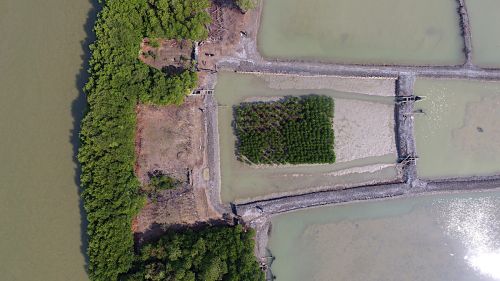Aquaculture field schools supporting mangroves for climate change adaptation of Indonesian milkfish-shrimp farmers
28 June 2021 | Woro Yuniati, Ratna Fadillah, Sri Rejeki, Lestari Widowati, Restiana Ariyati, Apri Astra, Roel Bosma | 1180 Downloads | .pdf | 3.33 MB | Aquatic plants, Better management practices, Emerging Global Issues, Environment and Sustainability, Indonesia, Livelihoods, gender and social issues, Marine finfish, Shrimp
Over the last five decades, over 30 million people along Java’s north coast have experienced subsidence and subsequent soil erosion. In 2015, Building with Nature Indonesia (BwNI-Demak) started a coastal protection project in 10 communities of nine coastal villages of Demak regency. The protection measures introduced included the use of permeable structures (dams) that successfully capture sediment and support natural recovery of mangroves, and aquaculture field schools, to train small-scale farmers on good aquaculture practices such as:
- Low external inputs sustainable aquaculture (LEISA).
- Associated mangrove aquaculture (AMA).
- Multi-trophic srhimp aquaculture.
This article discusses the practices and outcomes in terms of improved incomes and livelihoods of participating farmers.
Creative Commons Attribution.

